Things to Know Before Chasing the Northern Lights
An elusive natural occurrence that’s highly sought after. This just about sums up the Northern Lights in one sentence but there’s so much that is usually not mentioned. Indeed, what exactly is this phenomenon and how do you be best prepared for a Northern Lights chase?
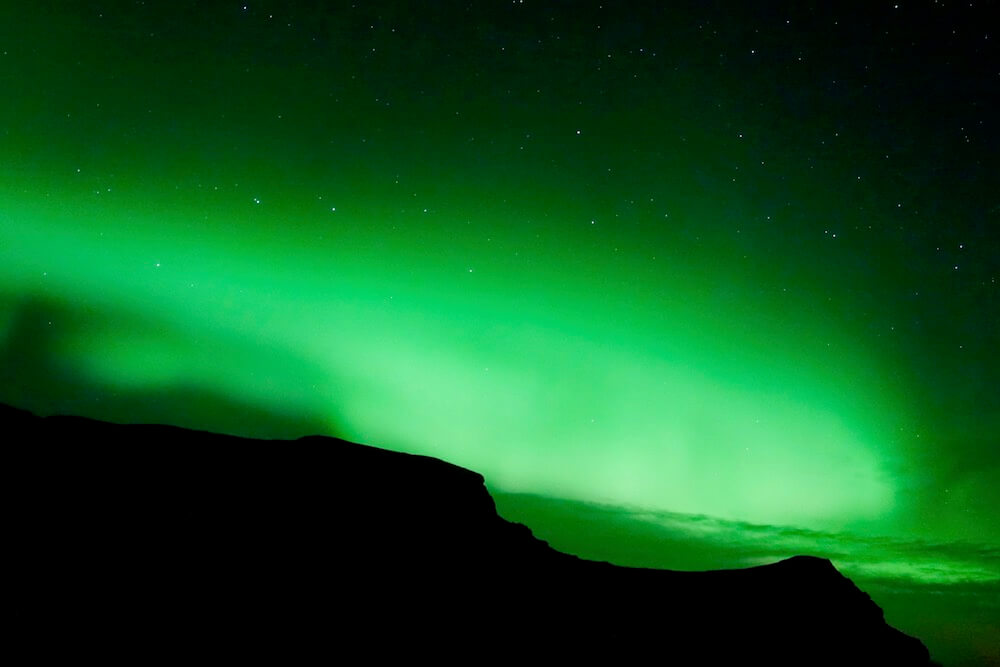
Let’s delve a little into the science of it:
Also known as the Aurora Borealis, the Northern Lights are caused by the collisions between electrically charged particles from the sun that enter the Earth’s atmosphere. The lights appear in a dazzling display of colours – most commonly seen in green, the lights can also reflect shades of red, yellow and blue. The lights can come in various forms as well, ranging from patches in the clouds and streaks across the sky to ethereal curtains that “dance” across the skies.
The Northern Lights can be seen over the Northern Hemisphere, from places such as the Swedish or Finnish Lapland, Norway or Iceland. Iceland’s temperatures rarely dip below 0 degrees, making it a popular place for Northern Lights sightings. The lights can also be seen over the Southern Hemisphere in places such as Tasmania; these are called the Southern Lights.
Before you embark on your first Northern Lights chase, here are a few things you need to know:
Check the weather forecast and KP index
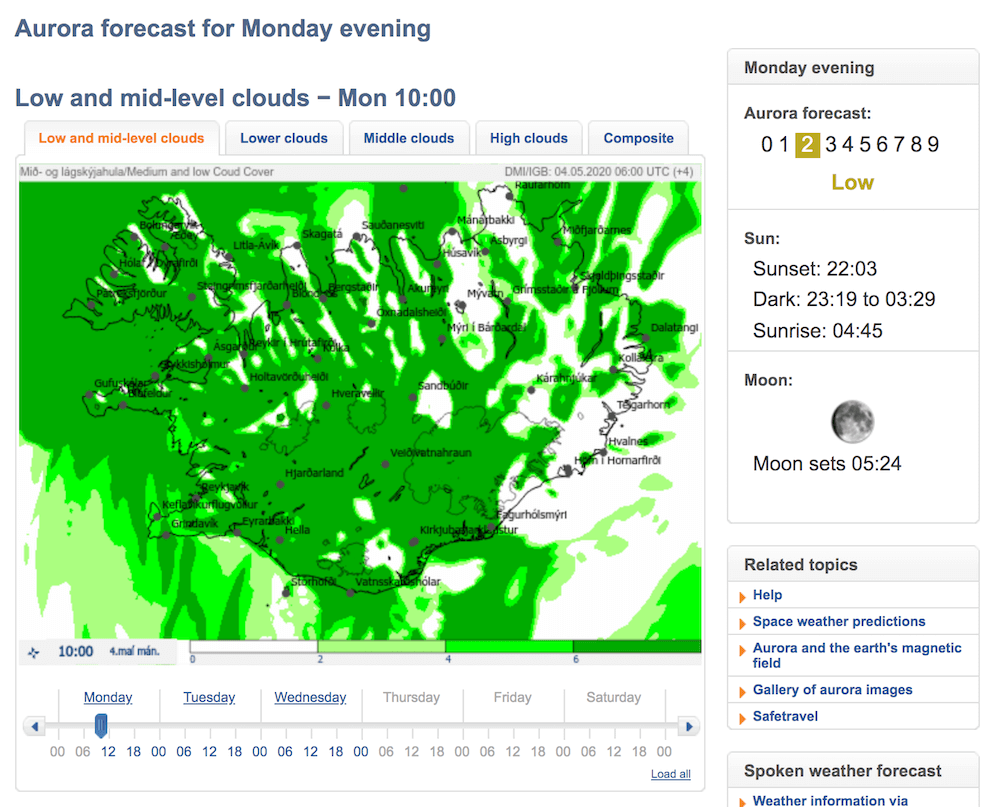
Image credit: Icelandic Meteorological Office
First and foremost, always check the weather forecast before heading out. Above all, clear skies are a must. There’s no use trying to spot the Northern Lights when they’re obstructed by a layer of cloud cover!
In addition, the KP index is used to predict the likelihood of Aurora showings. This index measures the geomagnetic activity required for Northern Lights visibility. The index ranges from a scale of 0 to 9; the higher the index, the more likely you’re able to see a display. As a quick reference, KP index readings from 1 to 3 predict a faint showing of the Aurora. Index readings from 4 to 6 reflect an active Lights session, with more probability of colours other than green showing. Index readings from 7 to 9 are the most ideal; these predict very active lights showings, with a possibility of rare colours like red making an appearance. Naturally, it’s rare for KP index readings to go so high and if you happen to be in Iceland during such a time, go all out and enjoy the experience!
Bookmark Iceland’s Meteorological Office’s official website for more information and the aurora forecast.
Avoid light pollution at all costs
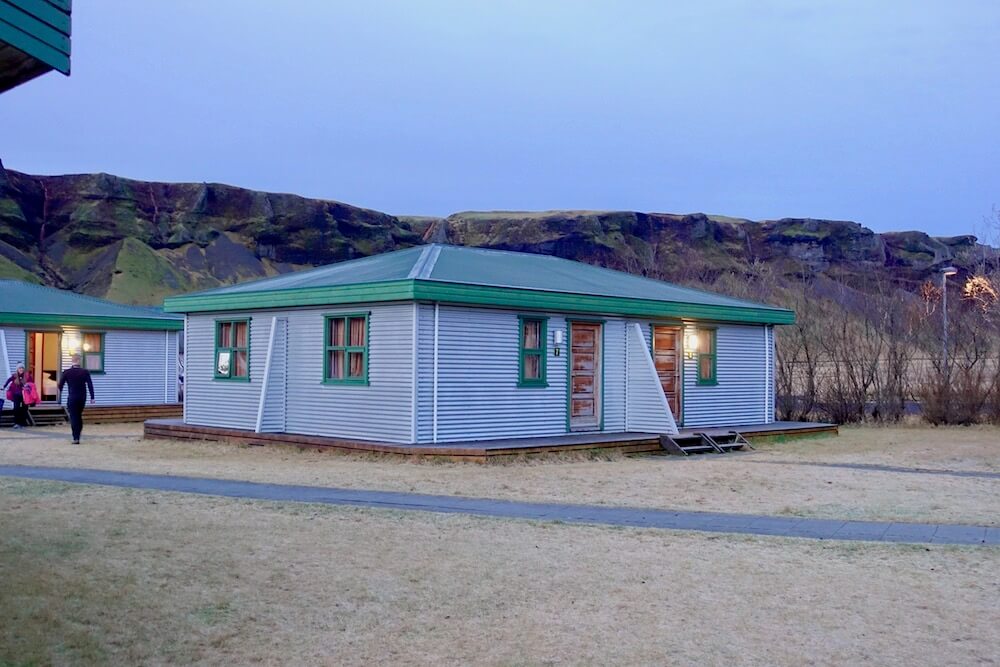
Light pollution refers to the brightening of the night sky due to light from man-made sources such as street lamps, buildings and so on. This light pollution is usually brighter than the aurora, preventing one from viewing the lights.
For an optimal viewing experience, it’s best to scout a location that’s far from any light pollution. Many isolated guesthouses in Iceland will put you literally in the middle of nowhere, presenting an ideal location to spot the Lights should they decide to shine. If you’re based in Reykjavik, your best bet is either to join a tour or to rent a car and drive out into the countryside.
Read: Things to Do at Reykjavik, Iceland
Don’t use online pictures as a benchmark
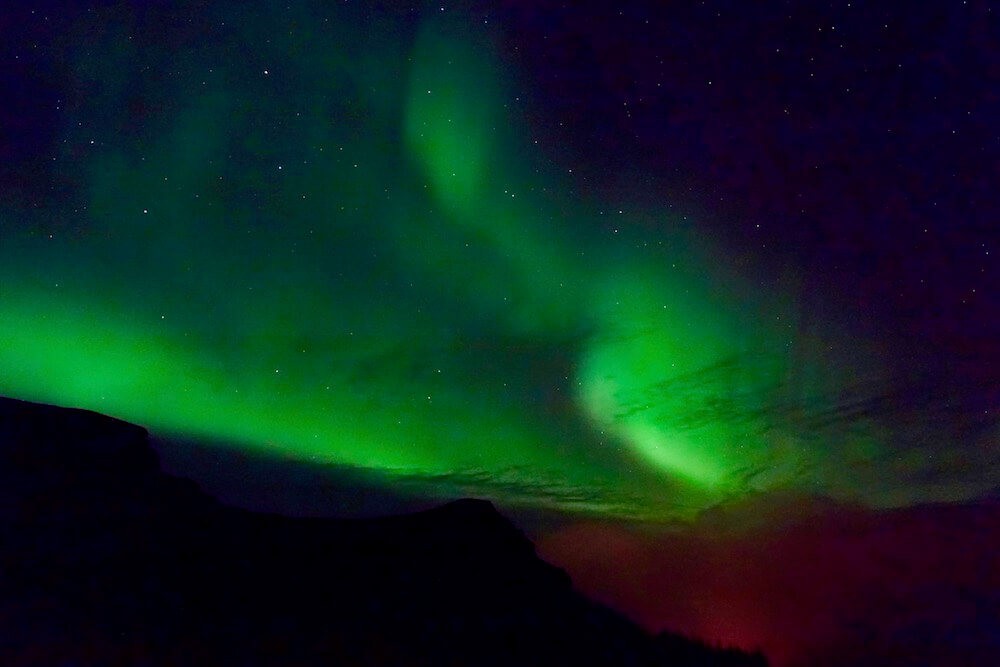
Think of the Northern Lights and pictures of vivid green streaks come to mind. The Northern Lights do look like that, don’t get me wrong – but only through the lens of your camera. Unbeknownst to many, the Northern Lights often look vastly different to the naked eye!
Take the above picture, for example. The skies are awash with a brilliant green but to my naked eye? All I saw was a patch of pale green clouds moving in the skies. It’s best to be cognizant of this fact to avoid any disappointment when you see the Lights!
Use the correct camera settings
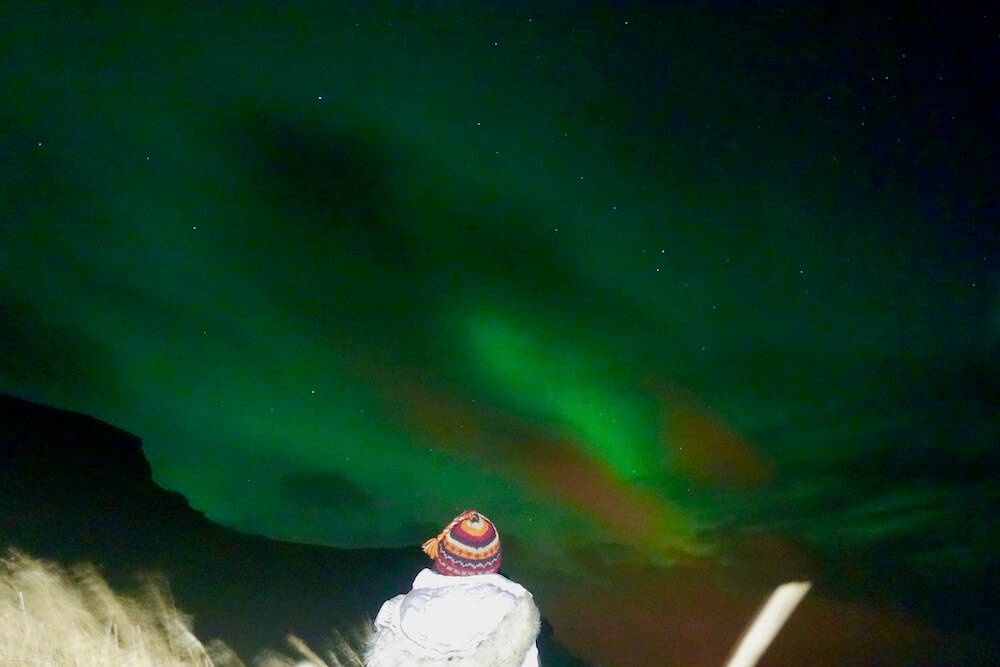
To capture the Northern Lights, you’d first need a good camera. Or a decent Huawei phone camera, as I’ve come to realise. I used the Sony RX100 V, a handy and compact digital camera to capture all the pictures in this article.
Besides the camera itself, using the correct camera settings is key. Some general settings to use are setting the camera focus mode to Infinity, using the Manual Mode and a wide aperture (2.8 to 4, depending on your camera), choosing a long exposure time and a high ISO (1600 and above).
To capture a subject in your picture, you’ll need to use your mobile phone’s flashlight to shine at the person upon pressing the camera shutter. This needs a little practice and I’ve admittedly haven’t gotten the hang of it yet – as you can see from the above over-exposed picture. It’d be good to play around with your camera settings a little before you head out. Remember, practice makes perfect!
Dress appropriately
I can’t stress this enough: you’re going to be out in the open with little shelter or wind cover for hours on end. It’s of the utmost importance to dress warmly! Bundle yourself up in a good coat with a down inner lining and come prepared with a warm hat, gloves, long pants and boots. Some locations might be windy, so it’d be great if you had a wind-resistant outer layer as well.
Bring the necessary equipment
As you’d soon realise, your camera batteries tend to deplete faster in cold weather. Charge your batteries fully and head out with a few spares, just in case. You wouldn’t want to be treated to a dazzling display only to find out that your batteries have all been exhausted.
If you’re planning on taking pictures of the Northern Lights, it’s also a must to have a tripod with you. This will help to enhance image quality without any movement. It’s good to ensure that your tripod is a sturdy one, especially since to eliminate light pollution, you might be in locations with uneven terrain.
Again, you’ll be out in the cold for many hours. A thermos flask filled with a hot drink and some biscuits will be a godsend in such a situation!
Tour or D.I.Y.?

If you’re unfamiliar with the terrain, it might be ideal to opt for a Northern Lights tour. There are a few types of tours to consider – there are tours that pack large groups of people (think 30 to 40 pax) into a huge coach and there are tours that keep it small, i.e. no more than 10 to a group. The former is naturally a lot cheaper than the latter; however, the bigger the bus, the less able they are to access remote places with as little light pollution as possible. Accessibility will hence be limited but these big tours are optimal for those on a budget, especially as a holiday in Iceland tends to be more on the pricey side. The smaller tours often depart in four-wheel drives, making it easy for them to access uneven terrain and scout out more locations in a night.
The bonus of joining a tour is that you’ll be privy to information from the guide, who will regale you with tales about the history and science of the Northern Lights. These tours usually provide refreshments as well during the wait. Many tours also offer a complimentary second attempt if the Lights don’t show on your first outing!
However, if you prefer to d.i.y. your experience, you can easily rent a car and go at your own pace. This will also give you more flexibility and freedom to do whatever, and go wherever, you want. If you decide on this option, it’d be great to ask the locals for some recommendations on where to go.
Be patient and persevere

Above all, the Northern Lights are a natural occurrence and hence, nothing is guaranteed! The KP index might be on the high side but if there’s a sudden onset of fog or cloud cover, there won’t be anything you can do.
Indeed, Northern Lights visibility is a careful curation of optimal weather conditions and geomagnetic activity – only the perfect blend of both will yield any results. Unfortunately, both factors are out of anyone’s control! Above all, you just have to be prepared to wait. Sometimes, you might get lucky and be treated to a display after just half an hour of waiting; sometimes, you’d wait for hours without any luck and start the drive home, only to catch a rippling Lights curtain along the way. There’s really no way of knowing.
However, any sighting is still a sighting and if you do catch the Lights, count yourself lucky. It’s all a game of chance and really, that’s what makes the Northern Lights experience so exclusive. All the best!

0 Comments Add a Comment?